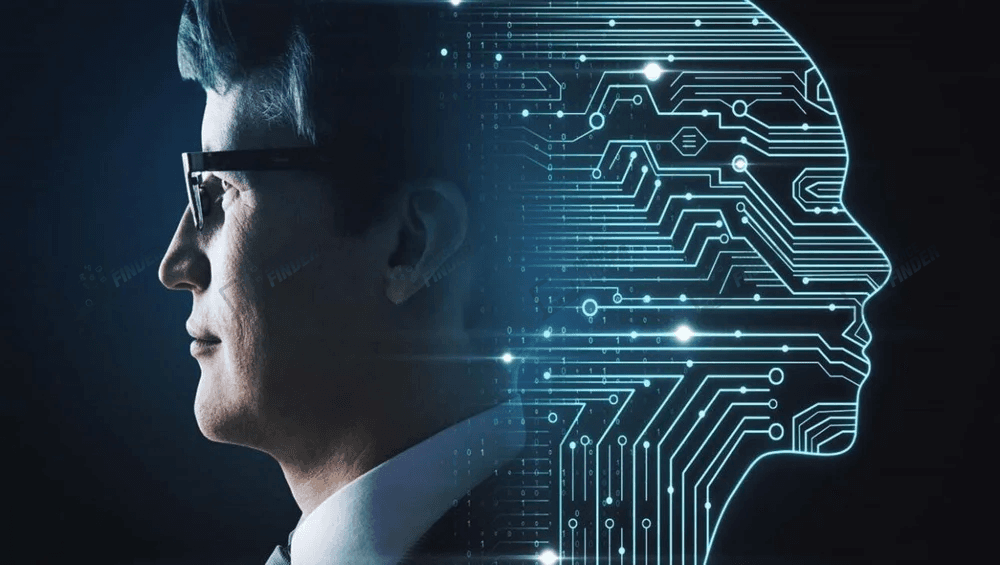
The Future of Work in a Human-Centric AI Era
In the age of Human-Centric AI, the way we work is changing. This approach combines smart AI with human creativity, understanding, and decision-making. AI helps do repetitive tasks, so employees can spend more time on innovation, problem-solving, and teamwork. Human-Centric AI not only improves efficiency but also creates fair and meaningful workplaces, making sure technology helps people instead of replacing them. With this approach, offices become smarter, more flexible, and more focused on humans.
The Evolution of Work in the AI Era
The workplace is going through a big change as artificial intelligence (AI) becomes a regular part of daily work. AI is not just for doing repetitive tasks; it is changing how companies work, make decisions, and come up with new ideas. The future of work is moving towards a human-centric AI model, where technology helps people instead of replacing them. In this system, AI handles routine tasks, data analysis, and predictions, allowing employees to focus on creativity, planning, and solving complex problems.
By encouraging teamwork between humans and intelligent machines, businesses can become more productive, innovative, and flexible. Human-centric AI also focuses on ethics, transparency, and inclusivity, making sure technology improves work quality and supports employees’ well-being. This change is creating workplaces where AI empowers people, helping them make smarter decisions, provide personalized experiences, and build a stronger workforce ready for the fast-changing economy.
What is Human-Centric AI?
Human-Centric AI is a way of designing artificial intelligence that focuses on people first. Instead of only trying to make things faster or more efficient, it cares about human values, ethics, and well-being. These AI systems work together with humans, helping them make better decisions instead of replacing them. By understanding human goals, preferences, and social situations, human-centric AI ensures actions are fair, responsible, and useful for society. This approach encourages openness, responsibility, and trust, creating technology that supports people and enables meaningful and productive interactions between humans and machines.
Core Principles of Human-Centric AI
Transparency
Human-Centric AI makes it clear how AI systems work. Users should understand how decisions are made, what data is used, and why certain results happen. Clear AI builds trust, reduces fear of automation, and lets people check and verify outcomes.
Accountability
Every AI system should have clear responsibility. Organizations and developers are responsible for the actions and results of AI. This ensures that mistakes or problems can be fixed and ethical rules are followed.
Fairness
AI should treat everyone equally, no matter their race, gender, social status, or other factors. Fair AI identifies and reduces bias in data and decisions, making it inclusive for all.
Privacy and Security
Protecting user data is very important. Human-Centric AI keeps data safe, collects only what is necessary, and prevents misuse. Users should feel confident that their personal information is secure.
Collaboration
AI should work with humans, not replace them. Collaboration-focused AI helps people work faster, make better decisions, and be more creative. AI acts as a partner to improve workflows and solutions.
Ethical Alignment
Human-Centric AI follows ethical rules that match society’s values. It considers long-term effects on communities, jobs, and people’s well-being, ensuring technology benefits everyone.
Real-World Applications of Human-Centric AI
Enhancing Workplace Productivity
Companies are using human-focused AI to handle routine tasks. This helps employees spend more time on important and creative work. For example, Citigroup is testing AI in its platform to do multiple tasks like data research and language translation with just one command. This helps make work faster and more efficient.
Fostering Innovation and Creativity
Human-focused AI gives employees more time to think creatively. By taking care of boring tasks, people can focus on solving problems and coming up with new ideas. For instance, Google is using AI in its products to make technology easier to use and to encourage creativity.
Promoting Ethical AI Development
More organizations are paying attention to the ethics of AI. The United Nations says countries should set rules to prevent unsafe AI use. This shows the importance of using AI responsibly so it helps people without causing harm.
The Future of AI: Integrating Human Values
AI is growing beyond just doing tasks automatically. It is now becoming a tool that increases human potential. The focus is moving from replacing humans to helping people improve skills like decision-making, creativity, empathy, and problem-solving. Human-Centric AI focuses on working together with humans, making workplaces more efficient, flexible, and innovative. AI is increasingly designed to support ethical and human-focused outcomes, making sure technology matches human values and benefits society.
AI Innovations Shaping Tomorrow’s Workforce
Modern AI technologies, such as language understanding, predictive analysis, and advanced robotics, are creating smart tools that help humans at work. These tools can process large amounts of data quickly, find useful insights, and give suggestions. This allows employees to focus more on strategic thinking, creativity, and people skills. In this way, AI does not just increase productivity but also changes how work is planned, done, and improved.
Google’s Vision for Human-Centric AI
Google sees AI as a way to extend human intelligence and integrate it into everyday tools and apps. Their focus is on ethical design, transparency, and helping users. AI solutions are made to boost creativity, make complex tasks easier, and make technology more natural to use. By putting humans at the center, Google wants AI to increase human ability while protecting social and ethical values.
Benefits of Human-Centric AI in the Workplace
Increased Productivity
Human-Centric AI can handle repetitive and time-consuming tasks, giving employees more time to focus on important work. This speeds up projects, reduces mistakes, and lets teams spend time on innovation and problem-solving.
Enhanced Creativity and Innovation
When AI takes care of routine work, employees can try new ideas and creative solutions. Tools like AI-assisted design, predictive analytics, and generative models encourage innovation and make human skills even stronger.
Smarter Decision-Making
Human-Centric AI gives useful insights, predictions, and scenarios that help employees make better decisions. Combining these insights with experience leads to smarter and more balanced choices.
Ethical AI Implementation
AI should follow human values, fairness, and transparency. Human-Centric AI focuses on privacy, reducing bias, and accountability, which builds trust with both employees and customers.
Strengthened Collaboration
AI works as a helpful partner, not a replacement. It makes teamwork easier, improves communication, and supports a mix of human and AI work, helping technology complement human skills.
Continuous Learning and Adaptability
Human-Centric AI can spot skill gaps and suggest learning opportunities. By analyzing work patterns, it helps employees and teams adapt to changing needs and encourages lifelong learning.
Employee Well-Being and Engagement
By taking over boring tasks and supporting meaningful work, AI improves job satisfaction and reduces stress. Employees feel valued and more engaged when their creativity and thinking are prioritized over repetitive work.
Preparing for the Future: Embracing Human-Centric AI
Upskilling and Reskilling the Workforce
To do well in a workplace with AI, employees need to learn new skills that work well with AI. Companies should provide training programs that help people improve skills like critical thinking, emotional intelligence, and creativity.
Establishing Ethical Guidelines
Companies should set clear rules for using and developing AI. This means making AI systems transparent, fair, and accountable. Following these rules will build trust and make sure AI benefits everyone.
Final Thoughts
The era of human-centric AI is changing the workplace, moving the focus from just automation to empowering people. By combining advanced AI with human creativity, care, and judgment, organizations can achieve higher productivity, more innovation, and better decision-making. Human-Centric AI makes sure technology helps people in an ethical, inclusive, and responsible way, creating workplaces that are fair, flexible, and meaningful. For employees, this means more time for strategic thinking, creative problem-solving, and teamwork, while routine tasks are handled smoothly by AI. Adopting this approach is not just about technology; it is about building a future where humans and machines work together, making smarter and more humane workplaces.









